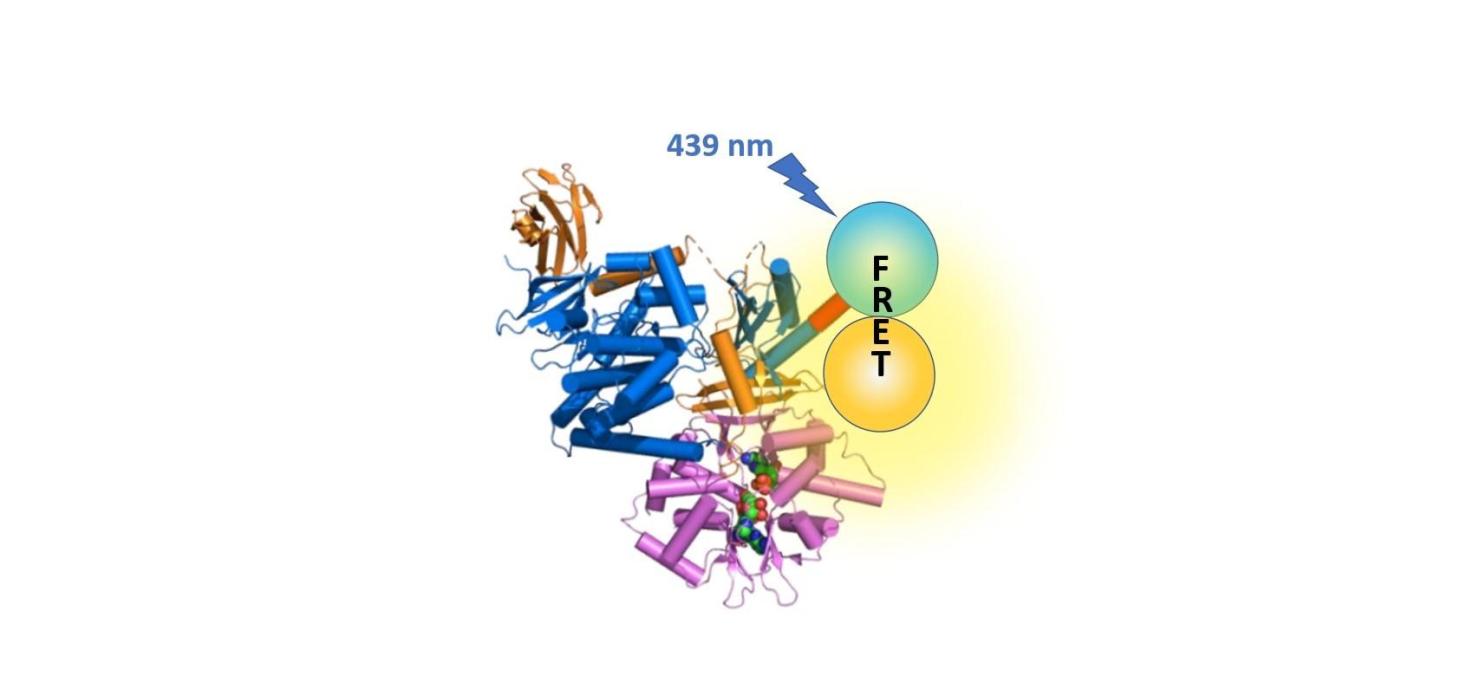- Share
- Share on Facebook
- Share on X
- Share on LinkedIn

Feel the Power: a first nano-sensor of cellular energy states.
Energy is at the core of all physiological processes in health and disease. Energy in cells is stored in the form of molecules called adenylates. Transformation of adenosine triphosphate (ATP) into adenosine diphosphate (ADP) and finally adenosine monophosphate (AMP) fuels metabolism and mechanical work. While the levels of ATP do not fluctuate a lot under healthy conditions, those of ADP and AMP do so much more. Thus, only ATP/ADP and ATP/AMP ratios appear to faithfully represent the true energy state of a cell.
Because of the key role of energy flux for all life processes, a tool that monitors such cellular energy states directly within cells would be highly desirable. Much effort has been spent to develop such sensors, but success has been limited. To track cellular energy levels, a sensor would need to gauge ATP, ADP and AMP concentrations at physiological levels, this however remained unfeasible to date.
An international team of scientists, led by Uwe Schlattner at the University Grenoble Alpes & Inserm, and Imre Berger at the University of Bristol UK has now succeeded to engineer AMPfret, the first nano-sensor capable of measuring energy states in cells in vivo. For their design they exploited the unique properties of a protein complex, the AMP-activated protein kinase (AMPK), to sense the right concentrations of AMP and ATP that indicate energy stress. When they discovered that that AMPK shape is considerably altered when it binds AMP instead of ATP, they joined forces to outfit AMPK at the appropriate places with a specific pair of fluorophores to generate a sensitive nano-device emitting light signals whe n the cell is stressed.
AMPfret enabled to detect, for the first time, energy states in vivo in cells by using a genetically encoded nano-device. Moreover, by analysing AMPfret in detail in vitro, we could decipher long elusive molecular mechanisms of the AMPK enzyme itself as well.”
Reference:
Pelosse, M., Cottet-Rousselle, C., Bidan, C., Dupont, A., Gupta, K., Berger, I., and Schlattner, U. (2019) Synthetic energy sensor AMPfret deciphers adenylate-dependent AMPK activation mechanism. Nat. Commun. 10, 1-13.
- Share
- Share on Facebook
- Share on X
- Share on LinkedIn